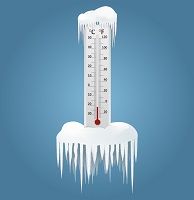Article
Freezing to Death: How It Happens in the US
Author(s):
More than 13,000 US residents froze to death from 2003 to 2013, according to the US Centers for Disease Control and Prevention (CDC.) The CDC has a name for that, environmental hypothermia.In an attempt to determine just how common that is in the US, CDC researcher Jon Meiman, MD and colleagues looked at such deaths. The team also did a more focused study on environmental hypothermia deaths in Wisconsin in 2014, after a period of record low temperatures there from Jan. 1 to April 1, 2014.

The US Centers for Disease Control and Prevention (CDC) have a name for freezing to death: environmental hypothermia.
In an attempt to determine just how common that is in the US, CDC researcher Jon Meiman, MD and colleagues looked at such deaths from 2003 to 2013. The team also did a more focused study on environmental hypothermia deaths in Wisconsin in 2014, after a period of record low temperatures there from Jan. 1 to April 1, 2014. All point to a need for more public education about the need to in contact with people who live alone, on being prepared to cope with a motor vehicle breakdown in freezing weather, and the dangers of alcohol or drug intoxication in such conditions.
Overall there were 13,419 environmental hypothermia deaths in the US in the decade studied. And there was a statistically significant increase in rates over the period, the CDC experts said, reporting in the Feb. 20 issue of Mortality and Morbidity Weekly.
Most of the decedents were over age 65. Men predominated, with a male death rate from freezing at 1.6 deaths per 100,000 population vs. a female death rate of 1.1 per 100,000.
About 10% of deaths were linked to alcohol or drug consumption, the CDC found.
In the Wisconsin study, they found that risk factors also included living alone, which often meant that the victims were not discovered in time to get treatment.
In three case studies, Meiman reported on the death of a 25 year old man found frozen a block from his home. His blood alcohol level was 230 mg/dL, almost three times the legally defined intoxication level of 80 mg/dL. The temperature was -8 degrees F.
Another death was that of a 59 year old woman found in her driveway when the temperature was 6 degrees F. She had multiple health problems, and death investigators believe she fell and could not get up. She lived alone and her last contact with a friend had been 72 hours before her death.
The third case was that of a man 63 years old who had advanced Parkinson’s disease and a tendency to wander outdoors. Though the temperature was a relatively mild 35 degrees, his body temperature had dropped to 45 degrees and he was not wearing a coat, just jeans and short-sleeved shirt.
Overall there were 27 hypothermia deaths in Wisconsin during the study period. The median temperature during those deaths was 6 degrees. Most were men (18 people or 67%), and in toxicology performed for 9 victims 6 were positive for alcohol. Only 5 (19%) had a history of mental illness, 1 was homeless, 4 lived in homes with non-working or unused furnaces, and 15 (56%) lived alone.
Older people are also more a risk because they may have “impaired heat generation and often multiple comorbidities that increase the risk for death,” the CDC said.
Treating such patients starts with simple measures like wrapping them in blankets and using heat blowers, but in severe cases can also involve body cavity lavage and cardiopulmonary resuscitation.
But most victims of environmental hypothermia do not make it to the emergency room, said Robert Korn, MD, an emergency medicine specialist and medical director of North Shore-LIJ's urgent care centers North Shore-LIJ GoHealth. The system is based on Long Island but includes facilities in New York City.
"They typically are dead at the scene and don't make it to an emergency department, " Korn said. Such cases are "fairly rare rare around here," and happen "more often in warmer climates that have a larger street population in winter who get surprised by a sudden cold snap".





